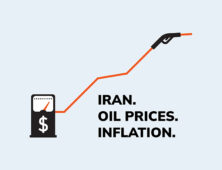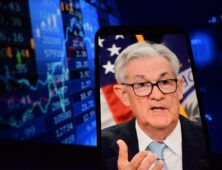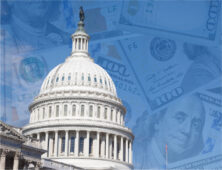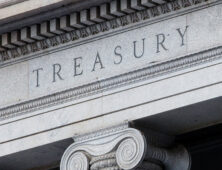Today’s Mortgage Rates in June 2025
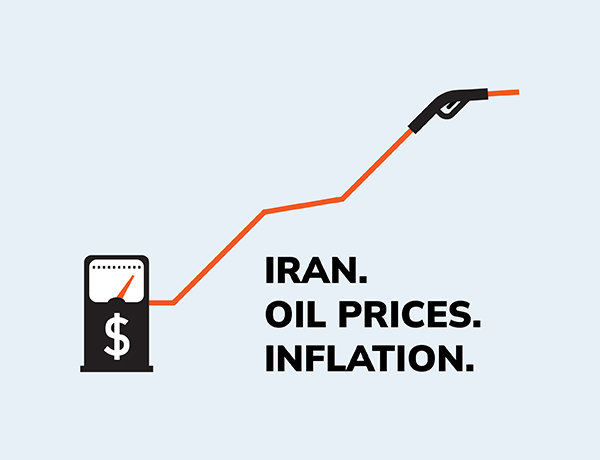
June 23, 2025
🔒What This Means for Mortgage Rates
Mortgage rates remain stubbornly range-bound, with a potential war being the one variable that could bring rates lower. The Fed’s delay in action, combined with growing inflationary pressure from both tariffs and oil, is keeping rates elevated—at least for now.
With that in mind, we continue to recommend a locking bias for borrowers, unless the 10-Year Treasury Note yield can make a decisive break beneath its 200-day moving average.
1️⃣ “Stupid Powell” or Just Slow to React?
On Wednesday morning, President Trump once again grabbed headlines when he declared that “Stupid Powell” wouldn’t cut rates—and, as it turns out, he was right. While I wouldn’t echo the name-calling, it’s hard to ignore the fact that the Federal Reserve continues to ignore critical downside risks to the U.S. economy.
Fed Chair Jerome Powell confirmed in his press conference that tariff-related price hikes could push core inflation back above 3%—well above the Fed’s 2% target. Yet what remains baffling is the Fed’s decision to treat tariff-induced inflation as if it were demand-driven. It’s not. These aren’t rising prices fueled by a booming economy. They’re taxes—just cleverly disguised. Tariff inflation sends money straight to the U.S. Treasury, not into the pockets of corporations or workers. That means it’s a headwind, not a sign of overheating.
Powell’s logic risks being another “too little, too late” moment. The Fed’s hesitation to act could deepen the economic slowdown that many now believe is already underway.
2️⃣War Watch: Iran, Oil Prices, and the Ripple Effect on Inflation
Markets are jittery, and for good reason. Tensions between the U.S. and Iran are escalating rapidly, with the US waiting on a planned attack from Iran. Over the past three weeks, crude oil prices have jumped nearly 12%, currently hovering around $76 a barrel. If a broader conflict erupts, experts from JPMorgan Chase and Goldman Sachs are warning that prices could spike to $120–$130 a barrel. That would send gas prices at the pump skyrocketing past $5.00 nationwide—levels not seen since 2022 during the peak of global energy uncertainty.
Remember, oil prices are a leading indicator of future inflation. From production to transportation, nearly everything we consume depends on it. Layer this on top of rising tariffs, and the result is a one-two punch to both supply chains and consumer wallets.
Let’s all hope diplomacy wins the day. Because if it doesn’t, inflation won’t be just a statistic—it’ll be something we all feel every time we fill up at the pump or check out at the grocery store.
3️⃣Retail Sales Slide: Consumers Are Tapping the Brakes
Retail sales in May dropped 0.9%, a steeper decline than the 0.6% expected by economists surveyed by Dow Jones. The drop was led by lower spending in auto dealerships, building materials, and electronics—industries where many buyers pulled forward purchases to beat tariff deadlines.
But there’s a broader story here: consumer confidence is clearly eroding. According to the University of Michigan’s latest survey, consumer sentiment fell to a seven-month low in June, with a sharp drop in future economic expectations. Uncertainty over tariffs, rising prices, and geopolitical instability has led many Americans to cut back on discretionary spending.
While some of this is temporary, the longer-term outlook depends on what happens next with inflation, the Fed, and global stability. If consumers remain cautious and credit tightens, we could be looking at a larger economic slowdown.
June 16, 2025
🔒Rate Outlook: Still Playing It Safe
Mortgage rates continue to hover in a narrow range, driven largely by inflation data, bond yields, and Fed policy expectations. We saw some improvement following last week’s CPI report, but any meaningful drop will likely require a strong signal from the Fed that rate cuts are coming.
Until then, we’re staying the course: while every day presents unique lock/float decisions, our overall guidance remains to lock—especially in such a headline-sensitive market where volatility can shift quickly.
📈 Bottom Line: Inflation is cooling, global tensions are easing, and the Fed may finally be warming to the idea of cutting rates. The tide could be turning—but until the Fed acts, caution remains key.
1️⃣ Inflation Surprise: A Win for Consumers and the Market
Last week’s Consumer Price Index (CPI) report came in better than expected, giving investors and consumers a much-needed dose of optimism. Headline inflation increased by just 0.1% in May, below the expected 0.2%, and brought the annual inflation rate to 2.4%—beating forecasts of 2.5%.
Even more encouraging, Core CPI (which excludes volatile food and energy prices) also rose by only 0.1%, far below the 0.3% estimate. This keeps the year-over-year Core rate steady at 2.8% and adds to the growing chorus of voices urging the Federal Reserve to begin easing policy.
For the Trump administration, this report provides political cover, as it suggests that the much-feared inflationary impact of tariffs has yet to materialize in a meaningful way. While that could change if global shipping or input costs spike, for now, this is solid news on the inflation front.
2️⃣US-China Trade Deal: Signs of Thawing Relations
Markets breathed a cautious sigh of relief this week as news broke that the U.S. and China have reached a framework agreement on trade. Though still pending final approval by both President Trump and President Xi Jinping, this breakthrough could help stabilize global supply chains and ease pricing volatility that has plagued businesses and consumers alike.
What’s perhaps more important than the deal itself is the signal it sends: both countries appear committed to continued engagement. After months of escalating rhetoric and retaliatory tariffs, this new direction may help to thaw what had become a chilly diplomatic and economic standoff.
So far, markets have responded with restrained optimism. Stocks nudged slightly higher, while bond yields held mostly steady as investors await more details. If a formal agreement is signed, we could see more meaningful market movement—and potentially lower mortgage rates if investor confidence grows in a soft-landing economic scenario.
3️⃣Fed Week: Will Powell Pivot?
This Wednesday, all eyes will be on Fed Chair Jerome Powell and the Federal Open Market Committee (FOMC) as they release their latest policy decision. While no rate cut is expected, the pressure is mounting—from the data, from the markets, and yes, from President Trump.
Powell has resisted political pressure to lower rates, citing concerns that tariffs could push inflation higher. However, as we discussed above, the latest inflation data directly undermines that argument. Tariffs may raise the price of specific imported goods, but they also act as a deflationary tax, removing money from the consumer economy without stimulating wage growth or corporate reinvestment.
Think of it like this: Holding rates high to counteract tariffs is a bit like raising interest rates to offset rising auto insurance premiums. It won’t solve the root problem, and it could choke off broader economic growth in the process.
The Fed is walking a tightrope. With inflation softening and economic indicators showing early signs of slowing momentum, a rate cut in the near future is not off the table. If Powell signals a dovish shift in the post-meeting press conference, we could see the bond market react favorably—and that would be good news for mortgage rates.
June 10, 2025
🔒Rate Outlook: The Locking Bias Remains
With uncertainty clouding both the fiscal and political landscape—and volatility dominating the bond market—we continue to recommend a locking bias for those in the mortgage process. A meaningful drop in rates likely hinges on:
- A major economic disruption, or
- A credible shift in fiscal policy that reins in runaway deficits.
Until then, staying conservative may be the best move.
1️⃣ Ray Dalio, Deficits, and the Growing Fear of a U.S. Default
Billionaire hedge fund manager and founder of Bridgewater Associates, Ray Dalio, just released his latest book—Principles for Dealing with the Changing World Order. In it, he doubles down on his warnings about the long-term risks facing the U.S. economy, including the real possibility of a sovereign debt crisis if policymakers fail to rein in spending. His timing couldn’t be more poignant.
Over the past week, yields on 30-year U.S. Treasury bonds surged to levels not seen since the 2023 inflation peak. This spike is rooted in a growing concern: Will the U.S. government be able to meet its long-term debt obligations? With President Trump’s recently unveiled “Big Beautiful Bill” poised to significantly increase the federal deficit, investors are becoming wary of locking up their capital for 30 years. Instead, many are flocking to short-term Treasuries, which carry far less risk and are easier to exit if the fiscal picture continues to deteriorate.
Even high-profile voices like Elon Musk have entered the fray, warning on X (formerly Twitter) that “America is approaching a fiscal cliff that can’t be ignored.” The market is listening.
Unfortunately, this shift in sentiment means higher long-term borrowing costs, which directly impacts mortgage rates. Until policymakers address these concerns, homebuyers may continue to struggle with affordability—despite a weakening economy that would normally push rates lower.
📈 Bottom Line: Risk aversion in the bond market is putting upward pressure on mortgage rates, even when economic signals would traditionally suggest a rate cut.
2️⃣Fannie, Freddie, and the IPO That Could Shake the Mortgage Market
Since 2008, Fannie Mae and Freddie Mac have operated under federal conservatorship—essentially controlled by the U.S. government to maintain stability in the housing market. But now, President Trump is floating a bold plan: remove Fannie and Freddie from government control and launch the largest IPO in U.S. history.
On the surface, this may sound like a way to reduce federal involvement and raise billions in revenue. But the implications for mortgage rates are enormous. Privatizing these entities could mean less government backing, which translates into higher risk premiums for mortgage-backed securities. Investors would likely demand a higher return to compensate for that risk—driving mortgage rates higher across the board.
Trump has claimed on Truth Social that the government will still stand behind investors even after privatization. However, such a move would be unprecedented—and potentially illegal. Most legal scholars argue that the federal government cannot guarantee private company investors without congressional approval.
If the privatization goes through without a strong, credible guarantee mechanism, the result could be sharp and immediate rate volatility—exactly what the housing market doesn’t need right now.
🏠 Bottom Line: Trump’s proposal could usher in a wave of rate instability, especially if federal backing becomes murky or politically contested.
3️⃣Jobs Report Undershoots (Again) – But Bonds Still Get Burned
The Bureau of Labor Statistics (BLS) released the May jobs report, showing 139,000 new jobs created—slightly above expectations of 130,000. But don’t be fooled by the headline.
The bigger story is the downward revisions: a combined 95,000 jobs were erased from the March and April reports. That’s a clear sign that the labor market is losing momentum, likely under pressure from slowing business investment and the ripple effects of tariffs, which have raised input costs for manufacturers and retailers alike.
In a rational market, this should have sent bond yields lower and given mortgage rates some relief. But instead, rates ticked higher again—a reflection of deep-seated concerns about government spending, inflation risks, and global de-dollarization trends.
💼 Bottom Line: The job market is softening, but mortgage rates remain stubbornly high due to broader structural fears.
June 2, 2025
🔒Rate Outlook: Still Locking
Although we’re seeing signs of relief on inflation, tariffs and trade tensions are keeping pressure on rates in the short term. With no clear sign of a rate cut on the immediate horizon, we continue to recommend a locking bias for borrowers in the current environment.
📣 Final Thoughts
It’s easy to get lost in the headlines, but staying focused on the underlying trends helps you make smarter mortgage and real estate decisions. We’re watching the data closely—and as always, we’ll keep you informed every step of the way.
If you find these updates helpful, please forward them to a friend or colleague. The more people we can help make sense of this market, the better.
1️⃣ Tariffs Are Back—But Are They Inflationary or Deflationary?
The Fed continues to hold off on rate cuts, and one of their most talked-about reasons is the recent wave of proposed tariffs, particularly those targeting Chinese goods. Policymakers argue that these tariffs will raise consumer prices and reignite inflation.
But here’s what’s missing from the conversation: Tariffs are taxes. And like all taxes, they pull money out of the economy. That’s deflationary.
Unlike a wage increase, which circulates through the economy multiple times, a tariff simply redirects consumer money to the federal government—where it doesn’t drive demand or job growth. If retailers were required to label price hikes as a “tariff tax” rather than burying them in sticker prices, the data might show less inflation and more restraint from the Fed.
Yes, some prices will rise—but these price hikes are different from inflation caused by excess demand or wage growth. They’re artificial and economically damaging. In fact, new research from Oxford Economics warns that tariffs could shave 0.3% off GDP over the next year if escalations continue.
Bottom line: The Fed should be just as concerned about the deflationary drag and recessionary risks these tariffs create.
2️⃣Inflation: Within Striking Distance of the Fed’s Target
The Fed’s preferred inflation gauge—the Personal Consumption Expenditures (PCE) index—was released last Friday, showing more encouraging signs:
- Headline PCE: Up just 2.1% year-over-year
- Core PCE (excludes food and energy): Still elevated at 2.5%, but trending lower
We’re now just half a percent away from the Fed’s long-standing 2% inflation target. If not for one stubborn component—Shelter costs—we may already be there. Shelter inflation is still running hot at 4.23%, but that could soon cool off.
Recent housing data shows a notable increase in inventory, with Redfin reporting a 12% year-over-year rise in active listings. As more homes hit the market, home price appreciation could flatten, helping the inflation numbers soften further.
Once shelter slows, the Fed will likely be out of excuses. A rate cut could come as early as September, depending on upcoming jobs and inflation data.
3️⃣U.S.–China Trade Tensions Are Heating Up—Again
Just weeks after signing a preliminary trade framework, tensions between the U.S. and China have reignited. The latest spark? A series of U.S. restrictions targeting advanced technologies:
- Export controls on AI chips and semiconductor tech
- Blocked sales of electronic design automation (EDA) software
- Revoked visas for Chinese students in STEM fields
In response, Beijing has vowed “resolute and forceful measures,” threatening retaliatory tariffs and restrictions on American firms operating in China.
Treasury Secretary Scott Bessent confirmed that negotiations have stalled, and that the White House is working to set up a high-level meeting between President Trump and President Xi to salvage talks.
These geopolitical tensions are already rattling financial markets. The bond market—highly sensitive to global risk—is experiencing renewed volatility, which is putting upward pressure on mortgage rates.
May 27, 2025
⏳Rate Outlook: Locking Remains the Safer Bet
Until we see mortgage rates break below their 200-day moving average (a key technical indicator used by traders), the base-case scenario remains a locking bias. Rates are still reacting to headline risks like tariffs, government spending, and inflationary pressures.
However, keep in mind—economic trends can shift quickly. A surprise move by the Fed, weaker-than-expected jobs numbers, or a cooling inflation print could spark the next leg down in rates. We’re watching it all closely.
1️⃣ Bond Market Jitters Sparked by GOP Spending Bill
Last week, the bond market was rattled after the House passed a sweeping GOP spending bill. The concern? A potential surge in the national deficit. According to updated projections from the nonpartisan Congressional Budget Office (CBO), the bill could add as much as $3.8 trillion to the federal debt over the next decade. That’s on top of an already eye-watering $34.9 trillion tab—and climbing.
A rising debt load means the U.S. Treasury will be forced to auction even more bonds to cover government expenses. But in a market already flooded with supply, investors are demanding higher yields to take on the additional risk. This upward pressure on bond yields is especially relevant for homebuyers, since mortgage rates closely track the yield on the 10-Year Treasury.
Add in Moody’s recent downgrade warning on U.S. credit quality, and it’s no surprise mortgage rates are staying elevated. The bill now heads to the Senate, and if it clears, President Trump is expected to sign it into law.
2️⃣Home Sales Drop to Post-Crash Levels
If 2024 felt slow for housing, 2025 is on pace to feel even worse. April’s seasonally adjusted existing home sales fell another 0.5% month-over-month, down to an annualized pace of 4.0 million homes—the lowest April total since 2009. For context, that was at the tail end of the Great Recession and housing collapse.
On the flip side, inventory is rising. The number of existing homes for sale in April jumped 21% year-over-year, offering buyers more options but also signaling hesitation from sellers eager to offload properties in a sluggish market.
The three-headed monster behind the slowdown?
- Mortgage rates holding near recent highs
- Record-setting home prices in many regions
- Widespread economic uncertainty
Until mortgage rates ease meaningfully, it’s likely we’ll continue to see this standoff between buyers and sellers.
3️⃣Tariffs Return – This Time, on Your Phone
Trade tensions escalated sharply after President Trump announced new tariffs, including:
- A 50% tariff on all goods imported from the European Union
- A 25% tariff on all iPhones manufactured outside the U.S.
- The same 25% tariff applied to Samsung phones and other non-U.S.-made devices
The move marks one of the boldest protectionist steps yet, and it’s hitting close to home. Smartphones are an everyday essential, and these new taxes could raise prices by hundreds of dollars per device.
Markets didn’t take the news well. Technology stocks tumbled, and inflation concerns spiked—two key drivers behind last week’s increase in mortgage rates.
May 19, 2025
🏠 Strategy and Outlook: Stay Defensive, Lock Smart
Mortgage rates continue to face upward pressure as markets search for clarity and confidence in the broader economic picture. While there may be brief windows of opportunity to lock in lower rates on favorable days, we continue to recommend a locking bias in this environment.
Volatility remains elevated, and timing the market has become increasingly difficult. For clients purchasing or refinancing in the near future, the best strategy is to work closely with a trusted mortgage advisor, consider options like temporary buydowns, and be ready to act quickly when pricing dips.
1️⃣ U.S. Treasury Downgrade Sends Ripples Through Mortgage Markets
For decades, U.S. Treasuries have been regarded as the safest and most stable investment in the global economy. That perception is starting to shift.
A recent downgrade in the U.S. credit outlook has rattled investors, prompting concern over our government’s ballooning federal deficit, which now approaches $37 trillion. Compounding this are rising interest rates, which have dramatically increased the cost of servicing existing debt. As the government rolls over maturing bonds, it’s now doing so at significantly higher rates—effectively crowding out investment in other sectors and increasing the long-term cost of borrowing.
Markets reacted swiftly. Mortgage rates inched higher on the announcement, though the full impact will play out over time as institutional investors adjust their models to factor in greater risk. The higher yield now required to attract investment means that upward pressure on long-term mortgage rates could persist until fiscal confidence is restored.
2️⃣Consumer Sentiment Drops to Second Lowest Level on Record
New data from the University of Michigan’s Consumer Sentiment Index shows that confidence in the U.S. economy has plunged—hitting the second lowest point since tracking began. The culprit? Inflation expectations and rising concerns over tariffs.
Recent tariff announcements, especially those targeting Chinese electric vehicles and key raw materials, have stoked fears of supply chain disruptions. Many consumers remember the empty shelves and price spikes of the pandemic era—and fear a repeat. If critical goods become harder to source, expect prices to surge and consumer spending to fall further. This is a critical watchpoint as the economy navigates uncertain terrain.
3️⃣Housing Market Activity Stalls as Buyers Wait on Rates
With mortgage rates rising and affordability stretched thin, more prospective homebuyers are hitting the pause button. According to Redfin and Realtor.com data, the number of homes under contract has declined for four straight weeks, and new mortgage applications fell again last week.
High interest rates have sidelined many would-be buyers who are unwilling to lock in at today’s rates. At the same time, sellers who secured ultra-low rates during the pandemic are reluctant to list their homes and give up that advantage. The result? A standoff, and a housing market that is freezing over in many parts of the country.
Builders are beginning to respond with greater incentives—including rate buydowns and price reductions—but until we see a meaningful decline in rates or a shift in Fed policy, activity is likely to remain sluggish.




